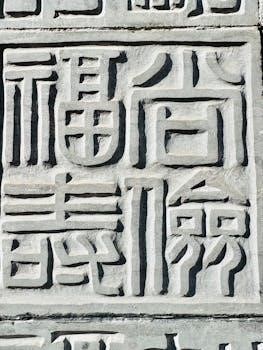Overview of “The Crucible”
“The Crucible‚” by Arthur Miller‚ dramatizes the 1692 Salem witch trials. A PDF download offers the full text‚ including Miller’s commentary on historical context. He clarifies dramatic licenses taken‚ like combining characters and adjusting ages for theatrical effect.
Arthur Miller’s Play and Historical Context
Arthur Miller’s “The Crucible‚” available in PDF format‚ presents a compelling dramatization of the Salem witch trials of 1692. While rooted in historical events‚ Miller takes dramatic liberties to enhance the narrative and explore broader themes. He acknowledges condensing multiple figures into single characters and altering ages to intensify the drama. His commentary included with some PDF versions‚ sheds light on these artistic choices‚ distinguishing the play from a strictly historical account.
The play explores themes of mass hysteria‚ paranoia‚ and the abuse of power‚ reflecting the McCarthy era during which Miller wrote it. Understanding the historical context of both the Salem witch trials and the McCarthy period enriches one’s appreciation of the play’s complexities. Accessing the full text PDF allows readers to delve into Miller’s powerful exploration of these themes.

Accessing the Full Text PDF
The full text PDF of “The Crucible” is readily available online. Many sites offer free downloads‚ providing access to Arthur Miller’s powerful play. Ensure the version includes Miller’s commentary for a deeper understanding of the work.
Downloading “The Crucible” PDF
To download “The Crucible” PDF‚ begin by searching reputable online sources such as educational websites‚ digital libraries‚ or authorized publisher platforms. Look for options that specifically mention the inclusion of Arthur Miller’s commentary or notes alongside the play’s script. Be cautious of unofficial sites to avoid potential malware or copyright infringements.
Once you’ve identified a trustworthy source‚ locate the download link or button‚ which is often labeled clearly. Before initiating the download‚ verify the file size and format to ensure it aligns with your expectations. After downloading‚ scan the PDF with antivirus software for added security.
Consider using a PDF reader that allows you to highlight‚ annotate‚ and search within the document for efficient study and analysis.
Reading “The Crucible” Online
Reading “The Crucible” online offers a convenient alternative to downloading a PDF. Numerous websites host the play’s full text‚ including educational platforms and literary archives. When selecting a site‚ prioritize those with a clear and user-friendly interface to enhance your reading experience.
Before diving in‚ check if the online version includes helpful features like a table of contents‚ character lists‚ or annotations. Some platforms also offer interactive elements‚ such as quizzes or discussion forums‚ to deepen your understanding of the play. Be mindful of potential distractions like ads or pop-ups‚ and consider using browser extensions to block them.
Ensure the website is compatible with your device and browser for optimal viewing. Reading online allows for easy access from various devices and eliminates the need for storage space.

Characters and Setting
“The Crucible” unfolds in Salem‚ Massachusetts‚ 1692‚ amidst the witch trials. Key characters include Reverend Parris‚ his daughter Betty‚ Abigail Williams‚ and John Proctor‚ each playing a crucial role in the unfolding drama.
Setting in Salem‚ Massachusetts‚ 1692
The play “The Crucible” is meticulously set in Salem‚ Massachusetts‚ during the year 1692‚ a period defined by intense religious fervor and societal anxieties that fueled the infamous witch trials. This specific setting is paramount to understanding the events and the characters’ motivations within the drama. Salem‚ a tightly-knit Puritan community‚ operated under strict moral codes and a deep-seated fear of the unknown‚ making it particularly susceptible to the hysteria that grips the town.
The historical context of 1692 Salem is interwoven with the themes of religious extremism‚ paranoia‚ and the suppression of individual liberties‚ all of which are central to Miller’s narrative. The community’s rigid social structure and the ever-present threat of divine retribution create an environment ripe for accusations and betrayals‚ as fear and suspicion erode the bonds of trust and community. The setting‚ therefore‚ is not merely a backdrop but an active force shaping the tragic events of the play;
Key Characters⁚ Parris‚ Abigail‚ Proctor
Several pivotal characters drive the narrative of “The Crucible‚” each embodying different facets of the societal tensions within Salem. Reverend Parris‚ the town’s minister‚ is consumed by a fear of losing his position and reputation‚ leading him to prioritize self-preservation over truth and justice. Abigail Williams‚ Parris’s niece‚ is a manipulative and vindictive young woman whose lies and accusations ignite the witch hunt. Driven by her desire for John Proctor‚ she skillfully exploits the town’s paranoia to achieve her selfish goals.
John Proctor‚ a respected farmer‚ is a complex figure grappling with his past sins and moral integrity. His affair with Abigail haunts him‚ creating internal conflict as he struggles to reconcile his guilt with his desire to expose the truth and protect his community. Proctor’s journey from a flawed individual to a tragic hero is central to the play’s exploration of conscience‚ sacrifice‚ and the devastating consequences of mass hysteria. These three characters are very important.

Themes and Analysis
“The Crucible” explores themes of mass hysteria‚ the abuse of power‚ and individual conscience. Miller critiques societal paranoia and the dangers of unchecked authority‚ highlighting the devastating consequences when fear triumphs over reason and justice.
Thematic Exploration of Witchcraft and Hysteria
Arthur Miller’s “The Crucible” delves into the potent themes of witchcraft and the resulting mass hysteria that gripped Salem‚ Massachusetts‚ in 1692. The play masterfully illustrates how fear‚ suspicion‚ and religious extremism can converge to create an environment ripe for irrationality and injustice. The accusations of witchcraft serve as a catalyst‚ unleashing a torrent of paranoia that consumes the community.
The characters‚ driven by their own agendas and insecurities‚ contribute to the escalating hysteria. Abigail Williams‚ fueled by jealousy and a desire for power‚ manipulates the other girls to perpetuate the false accusations. The court‚ swayed by the fervor of the moment‚ becomes an instrument of oppression‚ sacrificing innocent lives to maintain order and control. The play serves as a stark reminder of the fragility of truth and the dangers of succumbing to collective delusion. It is a powerful exploration of how easily societies can be swayed by fear.
Tragic Hero⁚ John Proctor
John Proctor‚ the protagonist of “The Crucible‚” embodies the classic characteristics of a tragic hero. He is a man of integrity and strong moral principles‚ yet he is flawed by a past transgression – his affair with Abigail Williams. This secret weighs heavily on his conscience‚ creating internal conflict and making him vulnerable to the escalating accusations of witchcraft.
As the hysteria grips Salem‚ Proctor struggles to reconcile his desire to expose the truth with his fear of revealing his adultery. His initial reluctance to come forward allows the injustice to spread‚ contributing to the downfall of others. Ultimately‚ Proctor chooses to confess to the affair in an attempt to discredit Abigail. However‚ this act of honesty backfires‚ leading to his own arrest and condemnation. In the end‚ he makes the ultimate sacrifice‚ refusing to sign a false confession and choosing to die with his integrity intact. His death serves as a powerful indictment of the corrupt court and the destructive nature of mass hysteria.
Dramatic Elements
Miller’s “The Crucible” employs dramatic irony‚ suspense‚ and powerful dialogue. These elements amplify tension‚ explore hypocrisy‚ and reveal character complexities. Stage directions create atmosphere‚ guiding audience interpretation of the unfolding tragedy and social commentary.
Act I‚ Scene 1 of “The Crucible” plunges into the heart of the Salem conflict. Reverend Parris is discovered kneeling beside his daughter Betty’s bed. She lies motionless‚ sparking rumors of witchcraft that grip the Puritan community. Abigail Williams‚ Parris’s niece‚ enters‚ hinting at the secrets and lies fueling the hysteria.
The scene establishes the setting—a somber bedroom in Parris’s house—and introduces key players caught in a web of suspicion; Parris’s anxiety and fear are palpable. The scene highlights the rigid social structure of Salem and the ever-present threat of accusations. The illness of Betty fuels the flames of religious paranoia‚ setting the stage for the unfolding drama. The audience is immediately drawn into the tense atmosphere of fear‚ suspicion‚ and repressed desires.
Stage Directions and Dialogue
Arthur Miller masterfully employs stage directions and dialogue to build tension and reveal character in “The Crucible.” Stage directions provide crucial context‚ painting a vivid picture of 17th-century Salem. They dictate character movement‚ emotion‚ and the overall atmosphere‚ guiding the audience’s understanding of the scene. The dialogue‚ sharp and often accusatory‚ exposes the underlying fears and resentments within the community.
Miller uses language to reflect the characters’ social standing and psychological states. Parris’s verbose and self-serving pronouncements contrast with Proctor’s terse and honest replies. The dialogue captures the escalating hysteria. The girls’ manipulative pronouncements spread fear like wildfire. The interplay between stage directions and dialogue creates a compelling theatrical experience‚ drawing the audience into the heart of the witch hunt. This combination illuminates the moral decay festering beneath Salem’s pious facade;

Educational Resources
For studying “The Crucible‚” resources abound. Study guides‚ literature kits‚ and online materials provide valuable insights. Assignments and resources for students enhance comprehension and critical analysis of Miller’s powerful play.
Study Guides and Literature Kits
To aid in understanding Arthur Miller’s “The Crucible‚” numerous study guides and literature kits are available. These resources delve into the play’s complex themes‚ characters‚ and historical context‚ offering students and educators a comprehensive framework for analysis. Study guides typically include chapter summaries‚ character analyses‚ thematic explorations‚ and key quote breakdowns‚ facilitating a deeper engagement with the text.
Literature kits often extend beyond basic study aids‚ providing supplementary materials such as character maps‚ vocabulary lists‚ essay prompts‚ and creative activities. These kits are designed to foster critical thinking‚ enhance comprehension‚ and encourage students to explore the play’s relevance to contemporary issues. Some kits even include audio or video resources‚ offering diverse learning modalities. These educational tools are invaluable for both classroom instruction and independent study‚ ensuring a thorough and enriching exploration of “The Crucible.”
Assignments and Resources for Students
“The Crucible” offers rich opportunities for student assignments‚ ranging from analytical essays exploring themes of hysteria and justice to creative projects reimagining scenes or characters. Students can analyze the play’s use of dramatic irony‚ symbolism‚ and allegory to understand Miller’s commentary on McCarthyism. Research projects might delve into the historical context of the Salem witch trials‚ comparing historical accounts with Miller’s dramatization.
Resources for students include online writing labs for essay support‚ character guides for in-depth analysis‚ and rhetorical analysis tools to examine Miller’s persuasive techniques. Teachers can utilize literature kits with pre-designed assignments‚ discussion questions‚ and assessment rubrics. Digital resources like online libraries provide access to critical essays and scholarly articles‚ fostering deeper understanding and informed perspectives. Students can also engage in debates or mock trials‚ embodying characters and exploring the play’s complex moral dilemmas.
